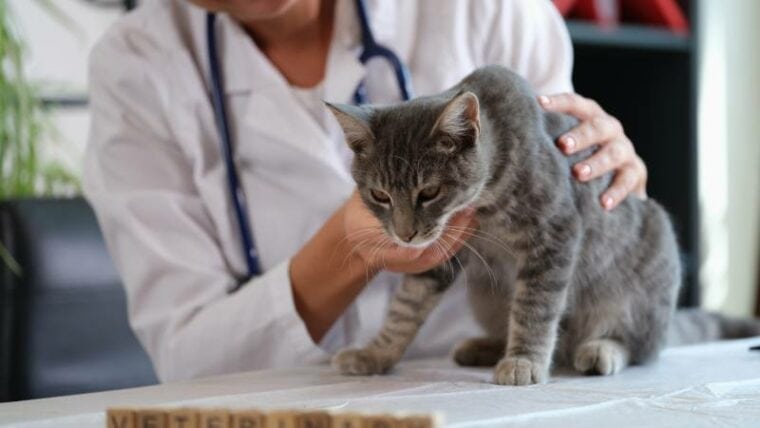
Click to Skip Ahead
Feline upper respiratory infections are common; just about every cat will have one at some point. A snotty nose, runny eyes, and a sore throat sound familiar, but knowing how to tell if your cat has these problems can be tricky. Cats are not only stoic and brave, but their signs can be confusing if you don’t know what to look for.
This article will explain upper respiratory infections in cats and the signs to look for. It will also discuss how to watch your cat for some of the more severe complications that this disease can cause.
What Is a Feline Upper Respiratory Infection?
An upper respiratory infection is mainly in the nose and sinuses. It causes inflammation of the thin and delicate mucous membranes, resulting in mucous discharge and swelling.
The viruses and bacteria that cause upper respiratory tract infections also infect the membranes surrounding the eyes, called conjunctiva, that swell and block the tear ducts. As a result, the eyes struggle to stay clean and lubricated.
The mucous membranes of the mouth can also get inflamed and become painful and problematic.
All three of these sets of mucous membranes are so close together that they are physically connected even though they are all parts of different body systems. So, even though it is called an upper respiratory infection, the disease itself is often a little more complicated.
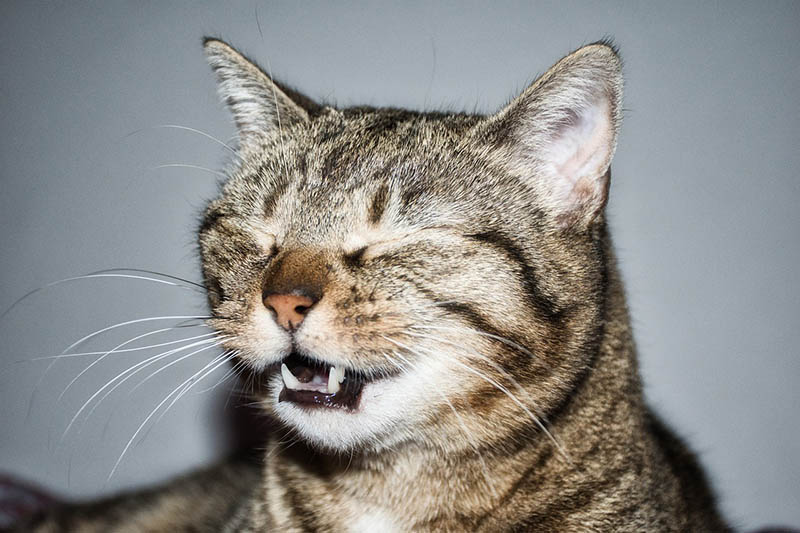
What Are the Signs of a Feline Upper Respiratory Infection?
Nose and Sinuses. The delicate and intricate membranes in the nose and sinuses become inflamed, resulting in the following signs:
If your cat’s nose is not running a lot, or if they are good at wiping away their snot, you might not see their runny nose at all. Instead, you might just notice it is dirtier than usual. Or you might notice their front legs have some crust where they wiped away the snot but haven’t cleaned themselves yet.
Eyes. The conjunctiva, the membranes around the eyes, and the inner parts of the eyelids also become inflamed resulting in the following:
Mouth. Inflammation of the mucosa of the mouth and tongue becomes inflamed leading to sores that hurt and can make it hard to eat. Since your cat can’t tell you their mouth hurts, look for the following signs instead:
Generalized Signs of Being Unwell. When a cat doesn’t feel great because of their upper respiratory tract infection, they may display some of the following more generalized signs:
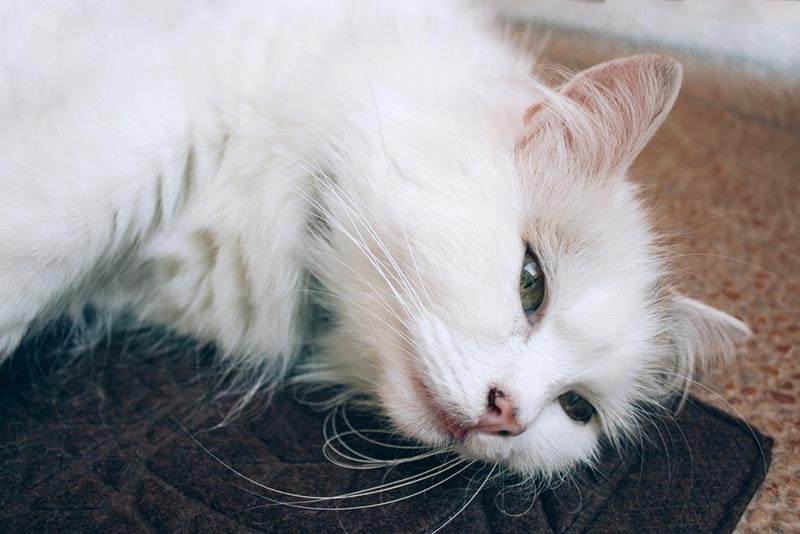
What Are the Causes of a Feline Upper Respiratory Infection?
Some of the more common infectious agents that cause upper respiratory infections are viruses, bacteria, or a combination of both. Both the bacteria and viruses that cause upper respiratory tract infections spread from cat to cat by respiratory droplets in the air and stuck on ‘things’ such as clothes. Cats that are no longer sick may still be able to shed the viruses even after they recover.
What Are Some Risk Factors for Upper Respiratory Infections?
Complications
Multiple viruses and bacteria may cause infection at the same time, but most of the time, cats are able to heal on their own. However, if they develop complications, such as bacterial infections in the eyes, nose, mouth, or lungs, they may need extra help to heal.
Some complications from upper respiratory infection include the following:
How Do I Care for a Cat with an Upper Respiratory Infection?
Most of the time, upper respiratory tract infections are self-limiting, meaning they resolve on their own. However, since they can so easily develop into much more severe diseases, it is still best to have a vet check it out.
A vet may also be able to prescribe medications that help your cat feel more comfortable as they fight the infection, like eye drops or anti-inflammatories, for example. Keeping them warm, well-fed, well-hydrated, dry, and happy is the best treatment at home.
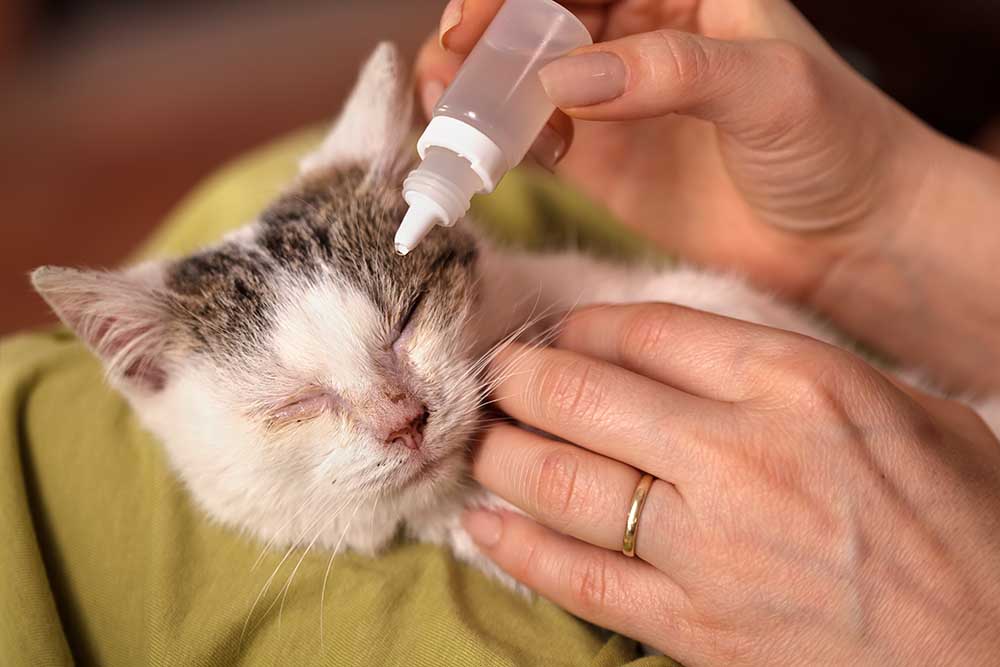
Frequently Asked Questions (FAQs)
How Long Does the Upper Respiratory Infection Last?
It should only last about a week, 5–10 days, but may linger on for two weeks. And if they develop complications, it can take even longer to heal.
After the first five or six days, it should improve a little every day. If after five or six days they get worse, or they get better and then get worse again, they need to go to the vet again to investigate complications.
How Do I Know if My Cat Has a Fever?
Fever can be a sign of upper respiratory disease, but it is impossible to know if a cat has a fever without taking a temperature (using a thermometer in the rectum).
There are some signs that might suggest a fever, such as lethargy, depression, and inappetence. But these can also be caused by other things and don’t necessarily mean there is a fever. For example, a cat might not eat because they have a fever or sores in their mouth.
Once you bring them to the vet, it is possible to measure their fever and make decisions based on it.
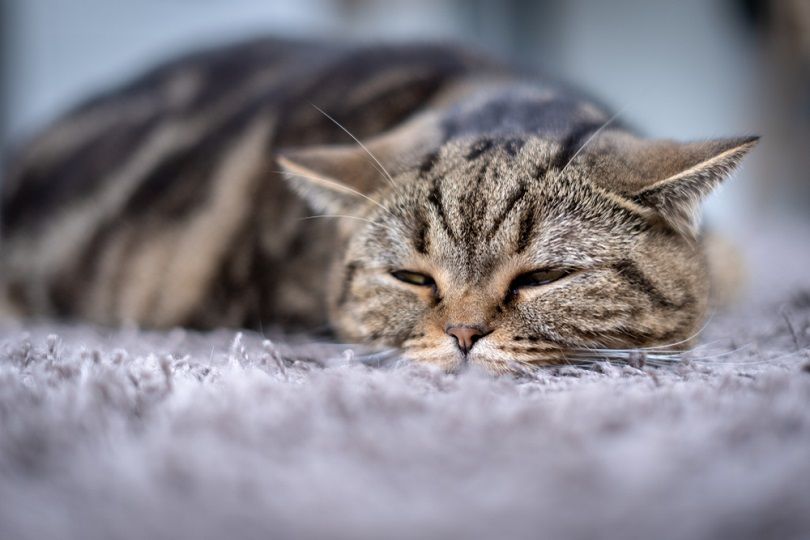
Does My Cat Really Need to Go See a Vet?
While most upper respiratory infections are self-limiting and resolve on their own, going to a vet is still a good idea. It is better to prevent possible complications than to fix them, and the earlier a vet is involved in the process, the more effective the treatment will be.
Vets can prescribe medications that can help your cat feel better. And may be able to suggest individual changes you can make to help your cat heal even better.
Here are some signs to look for that suggest you really should go to the vet again:
Conclusion
To sum it all up, upper respiratory disease in cats does not just infect the nose and sinuses but the mouth and eyes as well. The result is a bunch of snot, gunky eyes, sneezing, and sniffling. It is quite easy for this mild disease complex to snowball into more severe diseases, such as pneumonia, even though many cats can heal from it on their own. Be alert and proactive, but there is no need to panic.
Featured Image Credit: megaflopp, Shutterstock






